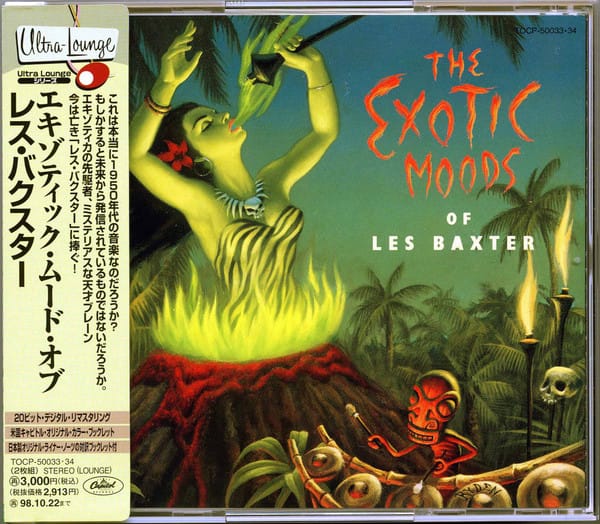THE EXOTIC MOODS OF LES BAXTER

Something was in the air in 1950s America that prompted a unique cultural zeitgeist of kitsch exotica in music. If I had to pinpoint the exact inspiration for this cultural phenomenon, I might be tempted to single out the song "Bali Hai" from Rodgers and Hammerstein's South Pacific (1949), which described a dreamy island where mystery, passion, and happiness coexisted, capturing the imagination of post-World War II American audiences. Bali Hai could be seen as representing a rare paradise on earth in a world fraught with global conflict—a haven for those seeking peace and love, pre-dating the hippie dream of the 1960s.
Texas-born orchestrator and composer Les Baxter (1922-1996) painted many sonic pictures of far-off lands and paradise islands on his exotica albums of the 1950s with his Hollywood-esque arrangements, combining lush strings with the additional distinctive instrumentation of bongos, vibraphones, and more primitive-sounding percussion instruments. Crossing genre boundaries, it could be said that Baxter created a whole new genre in itself - exotica.

The exotica genre was defined by the dream of faraway places inaccessible to most people in the suburbs of America, where putting on a Les Baxter or Martin Denny record would be the equivalent of going on holiday to the South Pacific islands of Polynesia, countries in Southeast Asia, and remote villages in Africa. It could also be said that the arrival of exotica complemented the arrival of the Jet Age in the late 1940s/early 1950s, as mass commercial air travel began to broaden the horizons for tourists and businesspeople worldwide, paving the way (for good and bad) toward globalisation. I can well imagine that listening to records like Tamboo or The Jewels of the Sea in the 1950s would have felt like the audio version of those luxury and glamour Pan Am and TWA ads featured in glossy lifestyle magazines that sold the dream of air travel to exotic destinations to the American public.
And in his unique crossover experimentation, Les Baxter introduced a new type of musical lexicon to popular music in the 1950s. Although it would be easy to deride the seemingly crude stereotypes of foreign, exotic cultures on the covers of his albums, I believe he did a great service to broadening the scope of musical taste for people and influenced many musicians (consciously or subconsciously) since, including The Beatles, Brian Wilson, Air, and Janelle Monáe.
I first stumbled upon a double CD collection of Les Baxter on Capitol Records at my favourite music store in Farnham, Surrey—Ben's Collectors Records—while studying film. It made such an instant impression on me that I used two tracks from the compilation in one of my early student films, The Drill at the American Grill which I plan to write about shortly.
In the meantime, sit back, imagine a nice, balmy night in Tahiti while sipping on a Mai Tai, and enjoy my recommended introductory track to the crazy world of Les Baxter: Quiet Village.